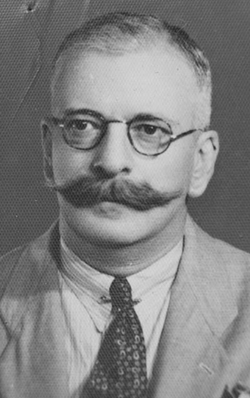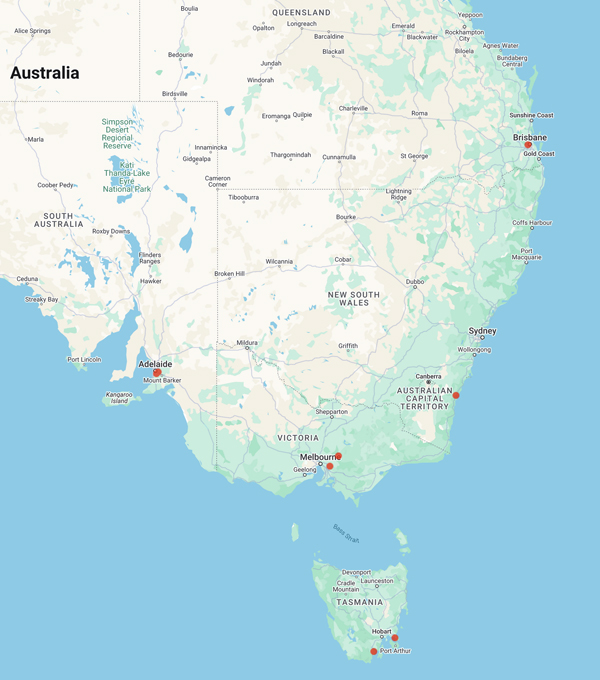
Council of Heads of Australasian Herbaria
Australian National Herbarium
Biographical Notes
 |
Council of Heads of Australasian Herbaria |
 Hansford, Clifford Gerald (1900 - 1966)
Hansford, Clifford Gerald (1900 - 1966)Born in Somerset UK in 1900.
He divided his active years as a mycologist between Jamaica, Africa and Australia, where he made large collections of fungi and flowering plants.
After gaining a first class degree in natural sciences at King's College, Cambridge, he lived in Jamaica from 1922-1926, employed as a microbiologist in the Department of Agriculture. During this time he married Lizzie Corbett. He moved to Uganda in 1926 to become a mycologist for the Department of Agriculture there. He made many collections in Uganda and other African countries, before moving once more to Australia. There he settled in Adelaide, where during an eight-year spell at the Waite Institute he described more than 150 species of Australian fungus.
In 1951 Hansford became head of the Waite Institute, part of the University of Adelaide in South Australia. Prior to his appointment Hansford had spent 20 years
in Uganda, and also worked in Ceylon and Jamaica. He was Head of the Plant Pathology
Department at the Waite Institute from 1951-1957, then returned to Africa.
Hansford
published four bulky papers on new records and revisions of Australasian (predominantly
Australian) fungi, in which 324 species are treated. In these and other papers he described two
new genera and more than 150 new species of Australian fungi.
Hansford visited the Kew Herbarium and re-examined the types of many Australian
microfungi described in the nineteenth century. Nearly all of the remaining material which he
examined was collected by others, either previously deposited in herbaria such as K or MEL,
or contributed by colleagues and other Australian mycologists and plant pathologists.
While Hansford dealt with all groups of fungi, he concentrated on microfungi on native
plants, so the macrofungi in his publications, such as the arid country phalloid fungus
Itajahya hornseyi Hansf., are liable to be overlooked. His particular interest was the
Meliolaceae, and he produced a world monograph of some genera in that family. Hansford's
published descriptions are excellent, but are seldom accompanied by illustrations. Many of
the specimens which he examined, along with his papers, are at ADW, and remain important
source material in the interpretation of his taxonomic writings.
Source: Extracted from:
https://plants.jstor.org/stable/10.5555/al.ap.person.bm000033163
Tom W.May & Ian G.Pascoe, 'History of the taxonomic study of Australian fungi',
in Fungi of Australia Volume 1A, Introduction—Classification, ABRS, Canberra (1996) p.193
Portrait Photo: http://www.cybertruffle.org.uk/people/0009741_.htm
from: Ainsworth, G.C. Brief Biographies of British Mycologists p. 85, 1996.
Data from 63 specimens
